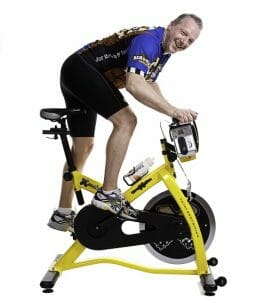Exercise Physiology Definition
Exercise physiology is the study of the body’s responses to physical activity. These responses include changes in metabolism and in physiology of different areas of the body like the heart, lungs, and muscles, and structural changes in cells. The word exercise comes from the Latin exercitus, “to drive forth,” while physiology comes from the words physis (“nature”) and logia (“study”).
History of Exercise Physiology
Exercise has been regarded as important to human health for thousands of years, beginning with ancient cultures. The Greek physician Hippocrates is one of the earliest-recorded and most well-known proponents of exercise. He recommended moderate exercise in order to stay healthy and even improve health. Other prominent ancient scholars throughout history followed suit, including Plato, Aristotle, and the Roman physician Galen, who believed that exercise improved general health, metabolism, and muscle tone, and even led to better bowel movements. Later, the Persian physician Avicenna also wrote in support of Galen in the medical text Canon of Medicine. Avicenna believed that exercise balanced the four body humors (an idea that was popular at the time and had been passed down from Ancient Greece). Importantly, he also recognized that too much exercise could have negative effects on the body.
In the 16th Century, around the start of Scientific Revolution, physicians began to write books on exercise. One of the earliest known books on exercise was Book of Bodily Exercise, written by the Spanish physician Cristobal Mendez. In his book, Mendez discussed benefits, types, and values of exercise, along with common exercises and why they were important to perform. In the 19th Century, some medical textbooks began to include chapters on exercise. The negative effects of lack of exercise, including poor circulation, weakness, and increased likelihood of disease, became more well-known. As the importance of physical activity became more and more important, schools also began to offer physical education classes, which required students to perform exercises for a set period of time each day.
The first true exercise physiology textbook, Exercise in Education and Medicine by Dr. R. Tait McKenzie, was published in 1910. Laboratories devoted to the study of exercise physiology were also established in the 20th Century. These included the Harvard Fatigue Laboratory, opened in 1927, and the Physical Fitness Research Laboratory at University of Illinois, opened in 1944. These schools conducted numerous on such topics as fatigue, cardiovascular changes during exercise, oxygen uptake by the body, and the effects of training. In 1948, the Journal of Applied Physiology began to be published. This journal publishes peer-reviewed research in exercise physiology and still exists today. While contributing greatly to our understanding of exercise’s effects, exercise physiology labs also trained numerous scientists who would go on to found their own exercise physiology laboratories in universities and medical schools all over the world.

Types of Exercise Physiology
The two types of exercise physiology are sport and clinical. Sport exercise physiology is, as its name suggests, related to athletes. Sport physiologists use knowledge of the body’s response to exercise in order to develop training regimens for athletes. Such regimens include fitness conditioning, which is the process of training to become more physically fit through periods of exercising certain muscles and resting. Clinical exercise physiology is the use of physical activity for therapy, treatment, and prevention of chronic diseases. One disease that can be aided by exercise is diabetes. Exercise uses the body’s stored glucose, so a diabetic may use exercise to help keep their blood sugar levels down. Another disease treated with exercise therapy is osteoporosis, the loss of bone tissue that commonly occurs in old age. Osteoporosis may cause joint pain and limit movement. Clinical exercise physiologists work with affected individuals to show them how to exercise in a safe way that minimizes pain, and may recommend activities such as swimming that are easier on the joints. Exercise is also sometimes used as part of a treatment for anxiety and depression, either as a standalone condition or as a result of a physical disease, because it raises serotonin levels and reduces stress.
Exercise physiology is also sometimes regarded as being either non-clinical or clinical; “non-clinical” is very similar to sport physiology, but the scope is widened to include healthy non-athletes who are looking to lose weight and/or gain fitness.
Exercise Physiology Careers
Many different careers in exercise physiology are available, and the number of jobs in the US is expected to increase as the population ages and obesity rates continue to rise. Exercise physiologists may work in a variety of non-clinical or clinical settings. Non-clinical settings include fitness centers, community organizations, and corporate fitness facilities. Sports physiologists may work in private fitness facilities or even for professional sports organizations. Clinical physiologists may be employed by hospitals, community facilities, and nursing homes. Many exercise physiologists enter careers in personal training, allowing them to work with clients one-on-one for an extended period of time to help them make progress with their exercise regimen.
With an exercise physiology degree, one may also pursue physiology research. Although a doctorate is needed to be the head of a physiology lab, those with bachelor’s degrees can become a research technician, and those with master’s degrees may be able to progress to being a research assistant or lab manager. In these positions, exercise physiologists perform research under the supervision of doctors and scientists. They may work in laboratory settings in hospitals, medical schools, or industry.
References
- n.a. (n.d.). “What is Clinical Exercise Physiology?” WiseGEEK. Retrieved 2017-06-30 from http://www.wisegeek.com/what-is-clinical-exercise-physiology.htm.
- n.a. (2016-11-21). “What can you do with an exercise physiology degree? 5 jobs to consider.” The College of St. Scholastica. Retrieved 2017-07-01 from https://www.css.edu/the-sentinel-blog/what-can-you-do-with-an-exercise-physiology-degree.html.
- Davis, Paul (n.d.). “Careers in Exercise Physiology.” American Kinesiology Association. Retrieved 2017-07-01 from http://www.americankinesiology.org/featured-careers/featured-careers/exercise-physiology.
- Entin, Pauline (n.d.). “A Brief History of Exercise Physiology.” Northern Arizona University. Retrieved 2017-06-30 from http://jan.ucc.nau.edu/pe/exs336web/336historyVA1.htm.
- Ivy, John L. (2007). “Exercise Physiology: A Brief History and Recommendations Regarding Content Requirements for the Kinesiology Major.” Quest 59: 34-41.
